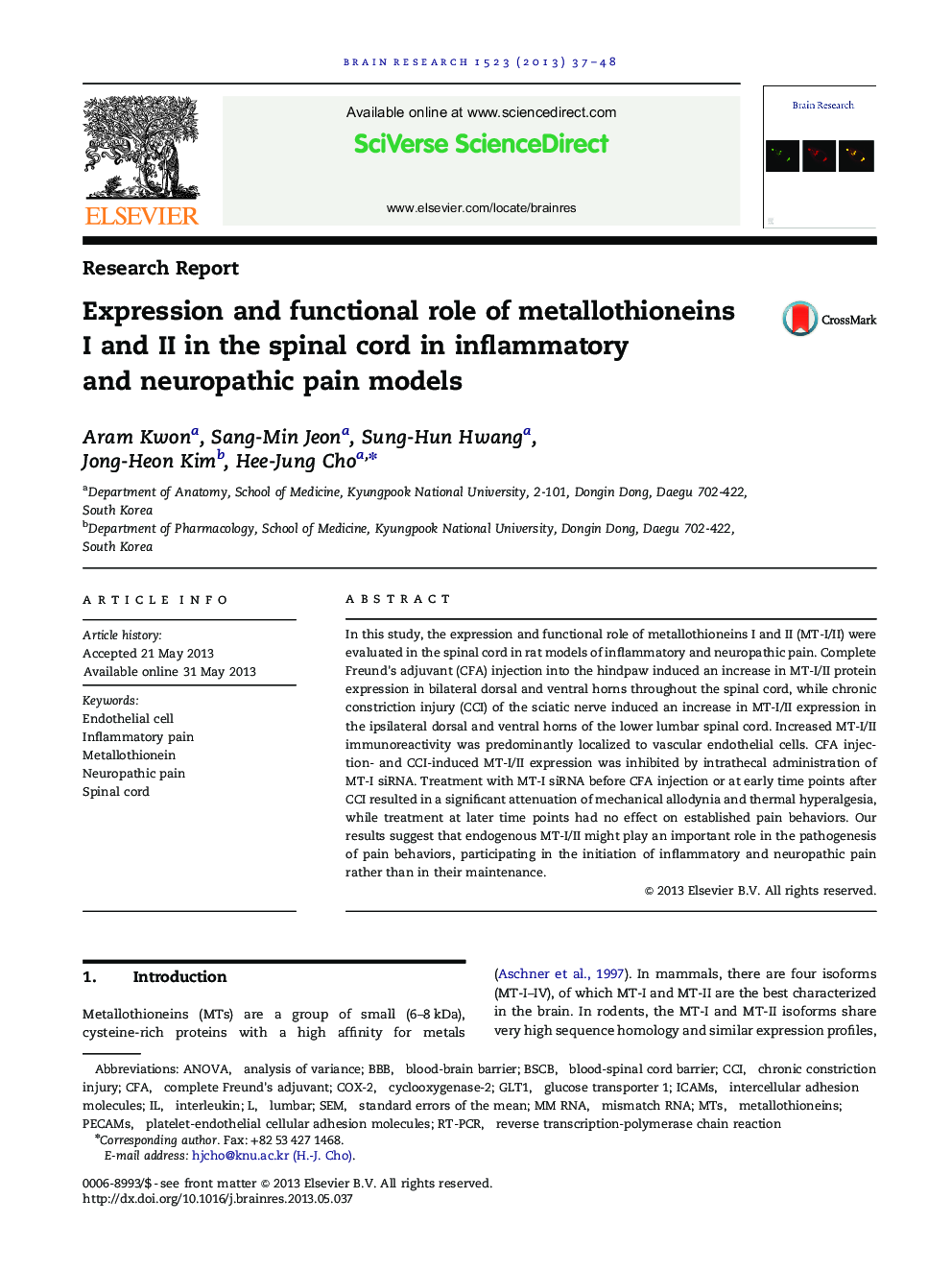| کد مقاله | کد نشریه | سال انتشار | مقاله انگلیسی | نسخه تمام متن |
|---|---|---|---|---|
| 4324559 | 1613916 | 2013 | 12 صفحه PDF | دانلود رایگان |

• The expression of MT-I/II was markedly increased in the spinal cord in pain models.
• Treatment with MT-I siRNA resulted in a significant attenuation of pain behaviors.
• Increased MT-I/II might play an important role in the pathogenesis of pain behaviors.
In this study, the expression and functional role of metallothioneins I and II (MT-I/II) were evaluated in the spinal cord in rat models of inflammatory and neuropathic pain. Complete Freund's adjuvant (CFA) injection into the hindpaw induced an increase in MT-I/II protein expression in bilateral dorsal and ventral horns throughout the spinal cord, while chronic constriction injury (CCI) of the sciatic nerve induced an increase in MT-I/II expression in the ipsilateral dorsal and ventral horns of the lower lumbar spinal cord. Increased MT-I/II immunoreactivity was predominantly localized to vascular endothelial cells. CFA injection- and CCI-induced MT-I/II expression was inhibited by intrathecal administration of MT-I siRNA. Treatment with MT-I siRNA before CFA injection or at early time points after CCI resulted in a significant attenuation of mechanical allodynia and thermal hyperalgesia, while treatment at later time points had no effect on established pain behaviors. Our results suggest that endogenous MT-I/II might play an important role in the pathogenesis of pain behaviors, participating in the initiation of inflammatory and neuropathic pain rather than in their maintenance.
Journal: Brain Research - Volume 1523, 26 July 2013, Pages 37–48